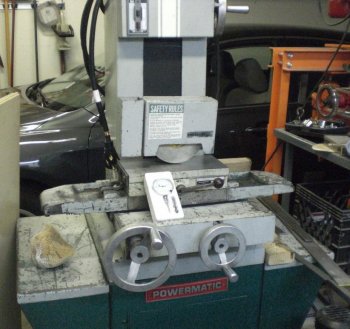Hankins
Well-Known Member
Dialing IN a Surface grinder?
Finally after ten+ yrs was able to get a surface grinder... to make stuff flat
Got her all wired up and the chuck ground. Started surfacing a Pre-HT Bowie blank that looked Flat!
Anyway after thinking things were just Hunky Dory I decided to Flip the piece over (Same Side up) and more material was coming off..Not expected!?
Now this is not a new machine by any stretch (Former high school shop) so maybe there is wear in other places...
Any Tips Tricks to figuring this out? Any help is appreciated
Finally after ten+ yrs was able to get a surface grinder... to make stuff flat
Got her all wired up and the chuck ground. Started surfacing a Pre-HT Bowie blank that looked Flat!
Anyway after thinking things were just Hunky Dory I decided to Flip the piece over (Same Side up) and more material was coming off..Not expected!?
Now this is not a new machine by any stretch (Former high school shop) so maybe there is wear in other places...
Any Tips Tricks to figuring this out? Any help is appreciated

